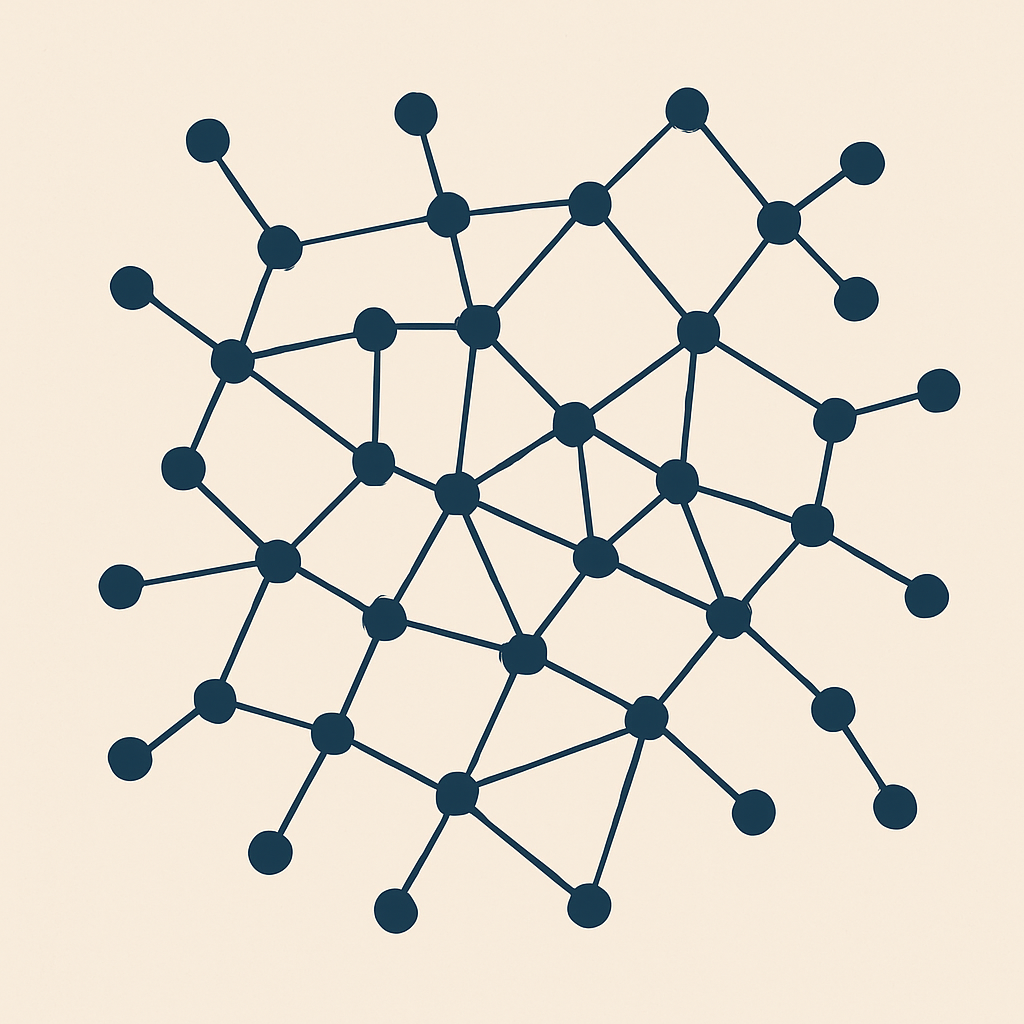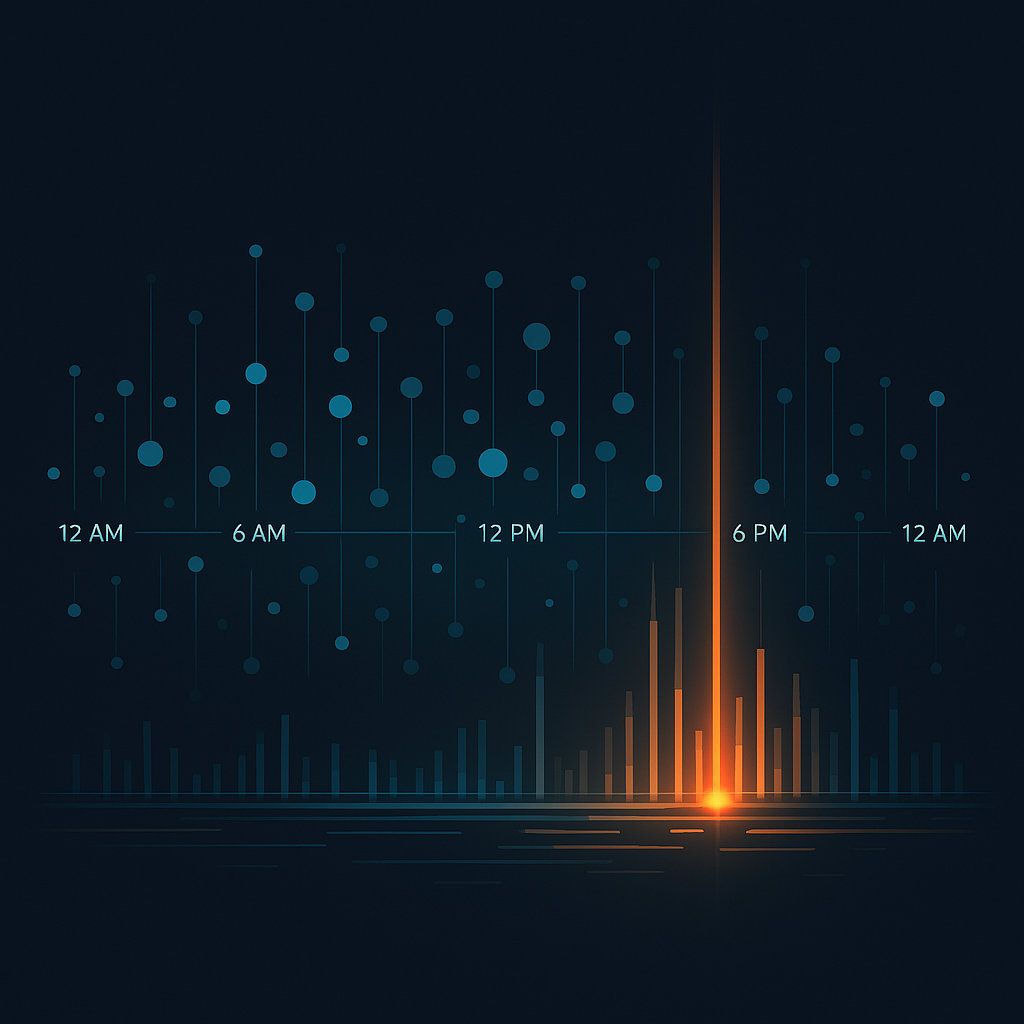The Hidden Layer of Privacy: Social Graphs and the Rolodex You Didn't Mean to Share
April 22, 2025
Author: Michael Goodwin

When people think about privacy, they usually focus on passwords, credit card numbers, or location data. But the real magic lies one layer deeper. The magic we're discussing is called metadata. I'm writing a series about this metadata, and this is the first entry. We will explore one of the most potent pieces of metadata you unknowingly give away: your social graph.
What Is a Social Graph?
In mathematical terms, a social graph is a type of network made up of nodes and edges. Each node represents an individual, and each edge represents a relationship or connection between them. These edges can be directional or mutual. Many systems also carry weight, reflecting the relationship's context or strength. On social media, this abstract structure becomes surprisingly accurate. You're part of dozens, possibly hundreds, of overlapping social graphs. Your behavior creates these graphs, whether you intend to or not.
Most people think of connections on social media as the people they follow or message. But social graphs go far beyond that. These networks are quietly built and refined through your behavior. That includes who you message most often, who likes your posts the fastest, who comments regularly, and who shows up repeatedly in tagged photos or event check-ins. Even if two people never interact directly, a platform might infer a connection if they message the same friend regularly or appear at the same event around the same time. Over time, this creates a dense, predictive model of your relationships. The graph contains not just who you know but how close you are to them, how much influence they might have over you, and how you move within your social world.

A social graph is, in effect, a living Rolodex you never meant to share. But instead of names and phone numbers you've written down, it's filled with machine-collected insights drawn from your digital interactions. Imagine that old-school Rolodex, the kind with cards you flip through. Now, imagine it annotated automatically. It doesn't just list who you know. It jots down notes like loves hiking, works late hours, often attends political events, and maybe shares a household with someone off-grid. You didn't write these notes. The platforms inferred these notes. And unlike a private notebook, this graph is visible. While it might not be viewable to the average social media user, it is most definitely visible to the platform.
So, while you may think you're only sharing what you post or who you choose to follow, you're constantly feeding this hidden structure. The social graph forms from your likes, messages, tagged photos and shared Wi-Fi connections. It's a digital fingerprint of your relationships and routines. It's quietly recorded and constantly updated.
How Social Media Weaponizes It
Platforms like Facebook, Instagram, TikTok, and LinkedIn don't need to read the content of your messages to understand your life. Instead, they rely on the patterns of your behavior. They look at who you direct message most often, who consistently likes your photos within seconds, whose posts you regularly comment on, and which accounts appear alongside yours in pictures or events. These subtle interactions are all signals. They paint a remarkably detailed picture of your social world when mapped across time. This detailed picture can influence your behavior, target you with specific content or advertisements, or predict your future actions.

Now imagine this data stripped of content entirely. No text, no images, no captions. Just metadata—who contacted whom, when, how frequently, from what device, in what order, and for how long. Even with end-to-end encryption, this metadata alone is enough to draw significant conclusions. If you message someone at midnight every night, that says something. If those messages spike after a particular event, that says something else. If a specific person reacts to your content seconds after you post from a device in the same city, the pattern speaks louder than words.
Metadata reveals rhythms. Platforms can extract relationships, routines, emotional spikes, behavioral drift, and influence from those rhythms. They don't need to know what you're saying to know who matters to you. They can model your daily schedule, predict sleep patterns, flag emotional states, and detect tension or closeness between individuals based only on interaction frequency and timing.
The platforms can pick up on changes, such as a sudden drop-off in communication, a change in who gets liked first, or a pause before a response that used to be instant. These shifts might be invisible to human intuition, but they are glaring to machines trained on billions of patterns. When platforms stitch your graph together with everyone else's, they don't just see your behavior. They see you in context. They see you in motion, reaction, or out of sync with the people around you.
It Was Never About the Words
We've grown up believing that privacy lives in our messages, photos, and posts and that if we keep our settings locked down and our content clean, we're safe. But the real story has always been in the metadata. It's the silent architecture behind the scenes. It’s who we talk to, when, how often, how fast we respond, what happens just before, and what happens just after.
Platforms don't need to understand what you say. They only need to watch how you behave. Their goal isn't to understand you. It's never been to understand you. It’s always been to keep you coming back.
That doesn't require words.
Just patterns.
But who am I to say anything? I added share buttons to my website.